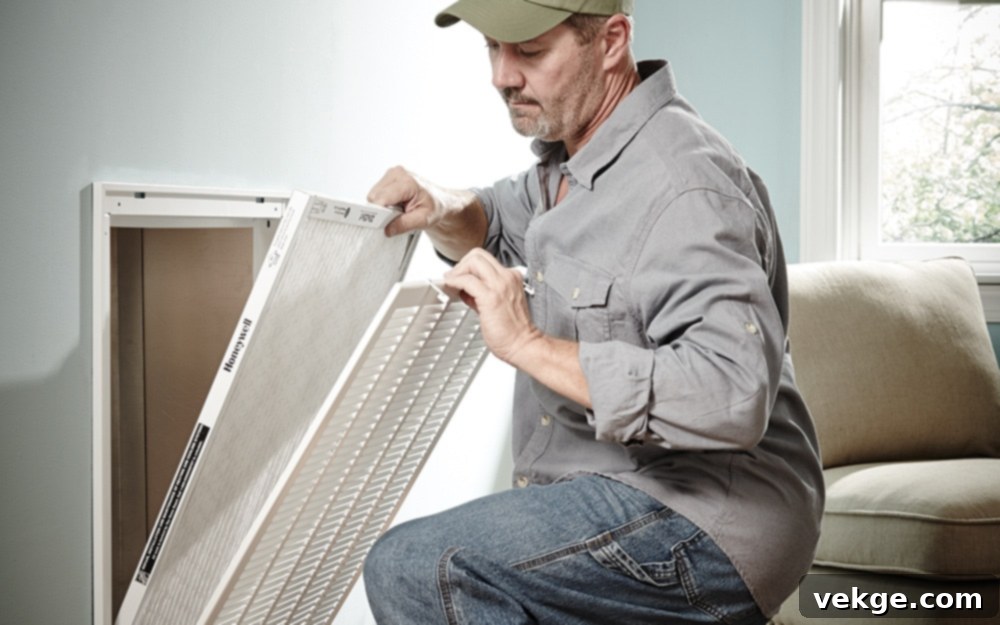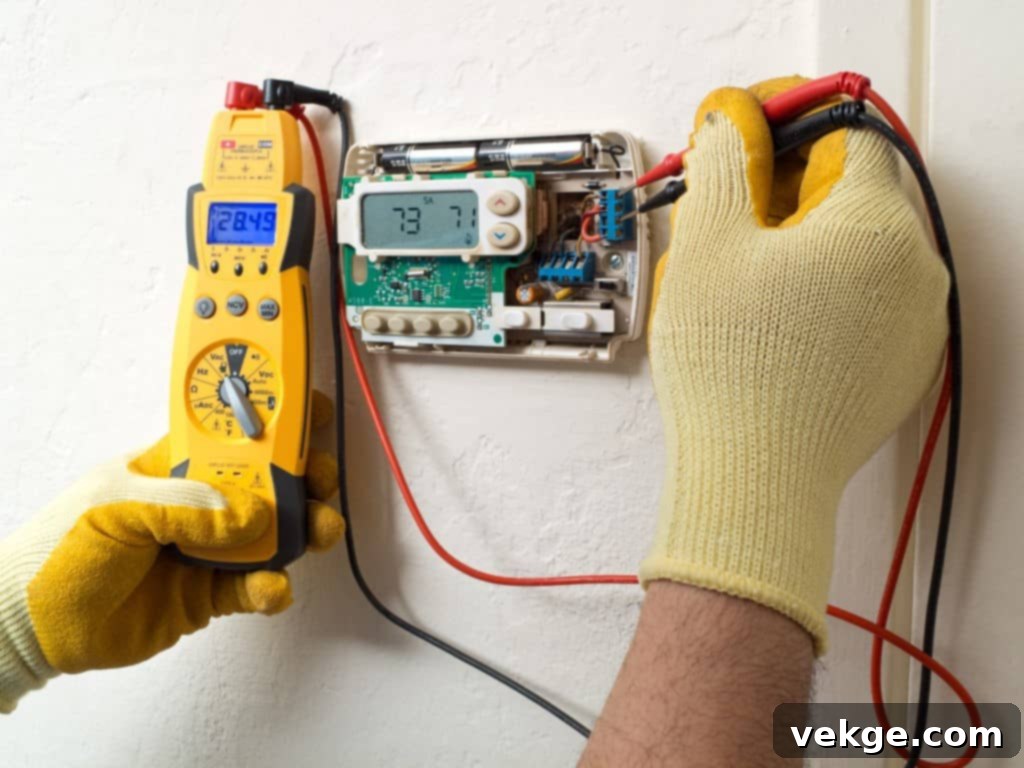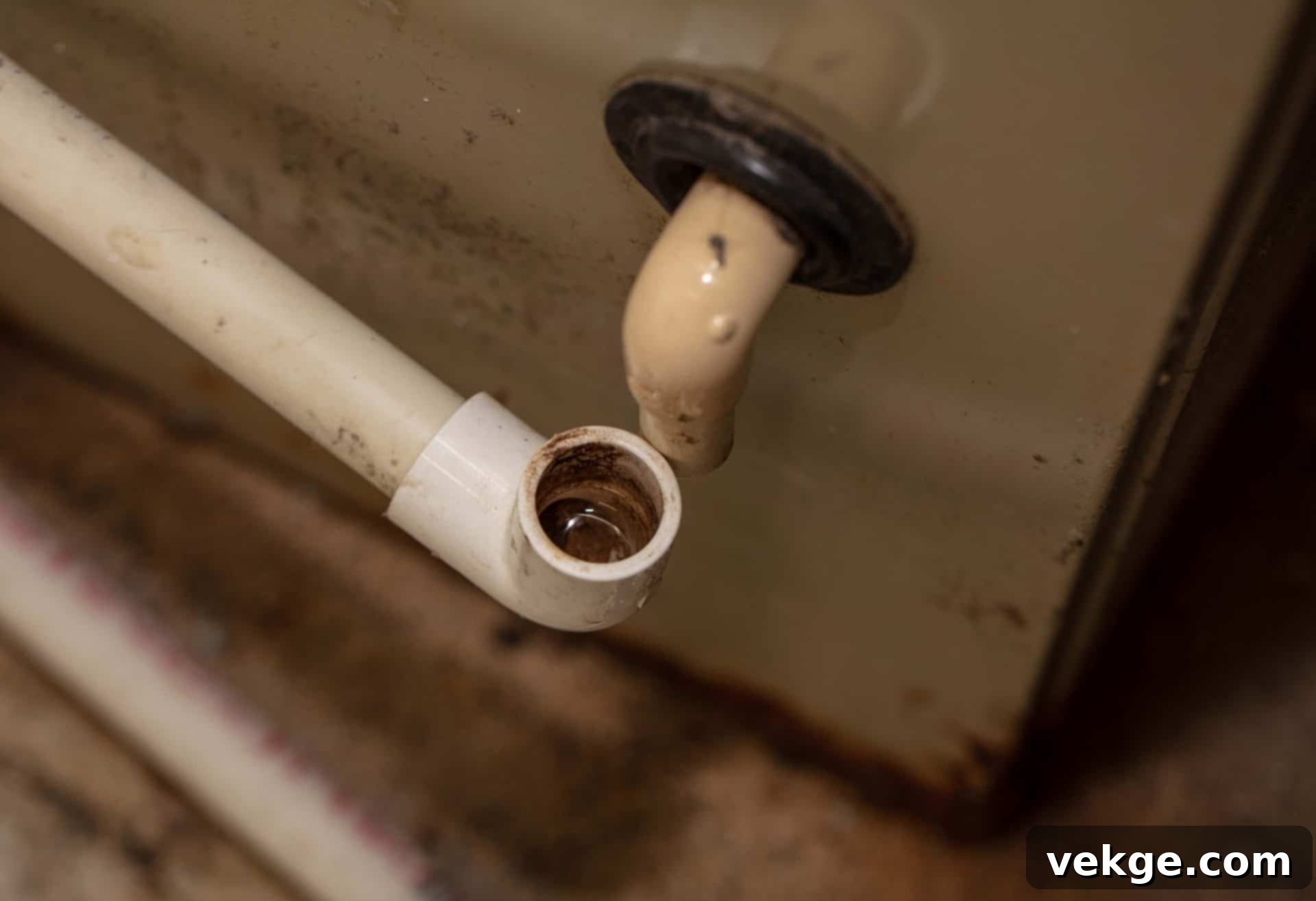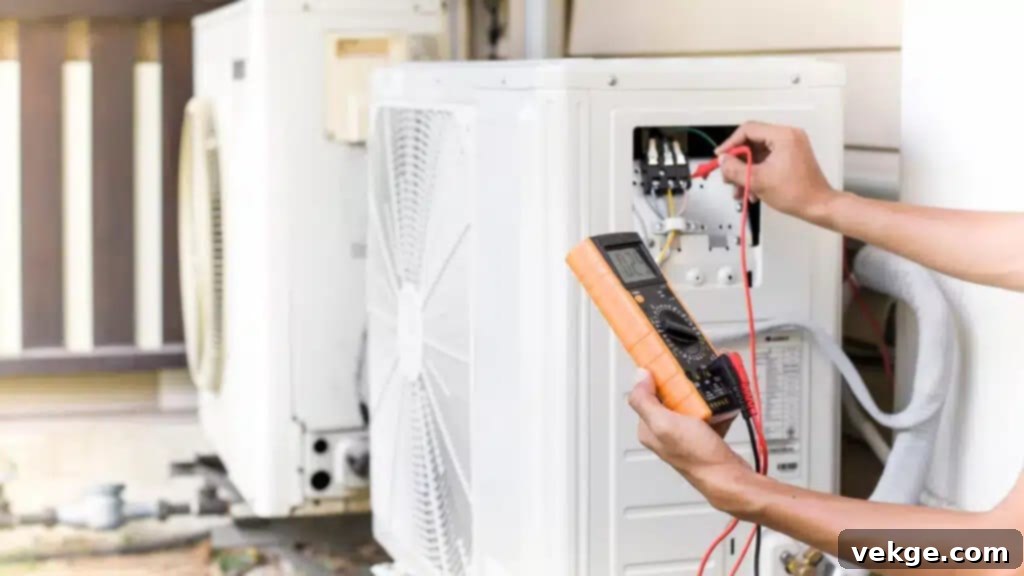Ultimate HVAC Maintenance Guide for California Homes: Stay Comfortable and Save Energy Year-Round
California’s diverse climate, from scorching summers that push cooling systems to their limits to mild but chilly winters requiring efficient heating, places unique demands on home heating, ventilation, and air conditioning (HVAC) systems. For residents across the Golden State, maintaining a comfortable indoor environment year-round isn’t just a luxury; it’s a necessity that relies heavily on a perfectly functioning HVAC system. A well-maintained system is the cornerstone of home comfort, ensuring efficient temperature control regardless of the season outside.
Beyond just comfort, proper HVAC maintenance is crucial for managing energy costs and extending the lifespan of your valuable equipment. Neglecting your system can lead to inefficient operation, higher utility bills, and unexpected breakdowns, all of which can be costly and inconvenient. To help homeowners navigate the complexities of HVAC care, the seasoned professionals at AirMaker HVAC Inc. in Winnetka, CA, have compiled a comprehensive list of essential maintenance tips. By following these expert recommendations, you can ensure your HVAC system runs smoothly, efficiently, and reliably from one season to the next, guaranteeing year-round comfort and peace of mind.
1. Prioritize Regular Air Filter Replacement

Perhaps the simplest yet most impactful HVAC maintenance task you can perform is regularly changing your air filters. These unsung heroes of your HVAC system trap dust, pollen, pet dander, and other airborne particles, preventing them from circulating throughout your home and accumulating on crucial internal components. When filters become clogged, your system has to work significantly harder to pull air through, which directly translates to reduced efficiency and increased energy consumption. This unnecessary strain on your HVAC unit not only drives up your energy bills but also shortens the lifespan of the equipment.
The frequency of replacement depends on several factors, including the type of filter, household size, presence of pets, and overall air quality in your area. As a general rule, inspect your filters monthly and replace them every 1 to 3 months. Households with pets or allergy sufferers may benefit from more frequent changes, perhaps every 30-45 days. Opting for high-quality filters can also enhance indoor air quality by capturing finer particles. Consistent filter replacement ensures optimal airflow, helps your system maintain desired temperatures more easily, promotes cleaner indoor air, and is a vital step in maintaining your HVAC system’s peak performance and longevity.
2. Schedule Bi-Annual Professional HVAC Inspections
While some maintenance tasks can be handled by homeowners, others require the expertise of certified professionals. For year-round optimal performance, your HVAC system needs comprehensive professional inspections at least twice annually: typically in the spring before the cooling season and in the fall before the heating season. These proactive check-ups by skilled technicians, such as those at AirMaker HVAC Inc. in Winnetka, California, are invaluable.
During these inspections, experts meticulously examine your entire system, from electrical connections and refrigerant levels to condensate drains and thermostat calibration. They can identify minor issues like worn belts, loose connections, or slight refrigerant leaks before they escalate into expensive repairs or sudden system failures. Professional cleaning of critical components, lubrication of moving parts, and precise adjustments ensure your system operates at its highest efficiency, providing reliable comfort and extending its operational life. Investing in bi-annual tune-ups is an investment in your home’s comfort and your peace of mind, potentially saving you significant money in the long run by preventing major breakdowns and reducing energy consumption.
3. Keep Your Outdoor HVAC Unit Clean and Clear

Your outdoor HVAC unit, often referred to as the condenser unit, is constantly exposed to the elements. Over time, it can accumulate a significant amount of dirt, leaves, grass clippings, dust, and other debris. This accumulation obstructs airflow across the condenser coils, forcing your system to work harder to dissipate heat, which drastically reduces its efficiency and can lead to overheating. Maintaining a clean outdoor unit is fundamental for proper operation and energy savings.
Before attempting any cleaning, always ensure the power to the unit is completely turned off at the breaker for safety. Once the power is off, carefully remove any large debris by hand, such as leaves or twigs, from around the unit. Then, using a gentle stream from a garden hose, rinse the coils from the inside out to push dirt and grime away. Avoid using a high-pressure washer, as it can damage the delicate fins. Furthermore, it’s crucial to maintain at least two feet of clear space around the entire unit. Trim back any shrubs, bushes, or other vegetation that could impede airflow. This simple but vital maintenance task prevents blockages, improves heat exchange, and ensures your system operates efficiently without unnecessary strain.
4. Inspect and Seal Your Home’s Ductwork
Your home’s ductwork acts as the circulatory system for conditioned air, distributing heated or cooled air throughout your living spaces. Unfortunately, many homes suffer from leaky or poorly insulated ducts, leading to significant energy waste. Gaps, cracks, and poorly sealed joints in your duct system can allow as much as 20-30% of your conditioned air to escape into unconditioned areas like attics, crawl spaces, or basements. This means your HVAC system has to work harder and longer to achieve the desired temperature, directly increasing your energy bills and reducing overall comfort.
Periodically inspect visible sections of your ductwork for any signs of damage, disconnected joints, or gaps. While many people reach for standard duct tape, it’s important to note that conventional cloth-backed duct tape is not designed for long-term sealing of HVAC ducts and often fails over time. Instead, use UL-listed foil-backed tape or, even better, mastic sealant – a paste-like substance that creates a durable, airtight seal. Ensure all joints, seams, and connections are securely fastened and sealed. Additionally, consider insulating any ductwork running through unconditioned spaces to further minimize heat transfer. Properly sealed and insulated ducts significantly improve airflow, enhance your HVAC system’s effectiveness, ensure consistent temperatures throughout your home, and drastically improve energy efficiency.
5. Calibrate and Optimize Your Thermostat Settings

Your thermostat is the brain of your HVAC system, dictating when it should turn on and off to maintain your desired indoor temperature. An inaccurately calibrated thermostat can lead to significant energy waste and discomfort. Even a slight discrepancy of a few degrees can cause your system to run unnecessarily, leading to higher energy bills. To check its accuracy, place a reliable room thermometer next to your thermostat and compare the readings. If there’s a noticeable difference, refer to your thermostat’s manufacturer instructions for recalibration.
Beyond calibration, consider upgrading to a programmable or smart thermostat if you haven’t already. These advanced devices offer unparalleled control and convenience. Programmable thermostats allow you to set specific temperature schedules for different times of the day or week, aligning with your family’s routine and reducing energy consumption when you’re away or asleep. Smart thermostats take this a step further, learning your habits, offering remote control via smartphone apps, and often integrating with home automation systems. By optimizing your thermostat settings and leveraging smart technology, you can significantly enhance energy savings, reduce the strain on your HVAC system, and ensure your home is always at the perfect temperature, exactly when you need it to be.
6. Verify and Enhance Your Home’s Insulation
While often overlooked in direct HVAC discussions, proper home insulation is a foundational element for achieving optimal heating and cooling efficiency. Effective insulation acts as a thermal barrier, preventing heat transfer between your home’s interior and the outside environment. Without adequate insulation, especially in critical areas like attics, walls, and crawl spaces, your conditioned air will quickly escape in summer, and cold air will seep in during winter, forcing your HVAC system to work overtime to maintain a consistent indoor temperature.
Assess your home’s current insulation levels, paying close attention to the attic, which is often the largest source of heat loss or gain. Consult local building codes or energy efficiency guidelines to determine the recommended R-value (a measure of thermal resistance) for your specific climate zone in California. Upgrading or adding insulation to meet these recommendations can dramatically reduce the workload on your HVAC system. This translates directly into substantial energy savings, increased comfort, and a more stable indoor environment, as your system won’t have to cycle on and off as frequently to compensate for poor thermal envelopes. It’s an investment that pays dividends in both comfort and utility bill reductions.
7. Maintain a Clear Condensate Drain Line

During the cooling process, your HVAC system removes humidity from the air, and this moisture collects in a drain pan before being expelled through the condensate drain line. Over time, this line can become a breeding ground for algae, mold, and other biological growth, leading to blockages. A clogged condensate drain line can cause water to back up, overflow the drain pan, and potentially lead to significant water damage to your ceiling, walls, or flooring. In many modern systems, a safety switch will also shut down the entire unit to prevent overflow, leaving you without air conditioning when you need it most.
Regular inspection and cleaning of the condensate drain line are crucial to prevent these issues. You can typically locate the access point near your indoor unit. To clean it, carefully pour a mixture of distilled vinegar and water (a 50/50 solution) or a small amount of diluted bleach (about a quarter cup of bleach to a gallon of water) into the access opening. This solution will kill algae and flush out minor blockages. Perform this simple maintenance task every few months, especially during humid periods, to ensure proper drainage, prevent costly water damage, maintain optimal indoor humidity levels, and keep your HVAC system running without interruption.
8. Regularly Inspect and Clean Evaporator and Condenser Coils
The evaporator coil (located indoors) and the condenser coil (located outdoors) are the heart of your HVAC system’s heat exchange process. The evaporator coil absorbs heat from your indoor air, while the condenser coil releases heat to the outside. Over time, these coils can become coated with a layer of dirt, dust, and grime, especially if air filters aren’t changed regularly. This layer acts as an insulator, severely hindering the coils’ ability to transfer heat effectively. When coils are dirty, your system has to work significantly harder, leading to decreased efficiency, higher energy bills, and accelerated wear and tear on components.
While professional technicians from AirMaker HVAC Inc. in Winnetka, California, will thoroughly clean and inspect your coils during their bi-annual maintenance visits, you can perform periodic visual checks. For the outdoor condenser coil, ensure it’s free from debris (as mentioned in Tip 3). For the indoor evaporator coil, access can be more challenging and often requires professional tools for a deep clean. However, if you can safely access it, you can gently brush away surface dust with a soft brush or a vacuum cleaner with a brush attachment. Keeping these coils as clean as possible is paramount for maintaining optimal heat transfer, maximizing your HVAC system’s efficiency, and ensuring it performs reliably for years to come.
9. Monitor Refrigerant Levels – A Professional Task
Refrigerant, often referred to as Freon, is the substance that absorbs and releases heat as it circulates through your HVAC system. Unlike a car’s oil or gas, refrigerant is not consumed; it operates within a closed loop. Therefore, if your system has low refrigerant levels, it’s not simply “low” – it indicates a leak in the system. Low refrigerant can have severe consequences, including significantly reduced cooling (or heating, in the case of a heat pump), increased energy consumption as the system struggles to perform its job, and even catastrophic damage to the compressor, which is one of the most expensive components to replace.
If you notice your HVAC system is no longer cooling or heating effectively, or if you hear a hissing sound, it could be a sign of a refrigerant leak. This is absolutely not a DIY task. Only certified HVAC technicians are equipped and legally allowed to handle refrigerants. During a professional inspection, experts from AirMaker HVAC Inc. will accurately check the refrigerant levels, identify any leaks, repair them, and then recharge the system to the correct specifications. Addressing refrigerant leaks promptly is critical not only for your system’s health and efficiency but also for environmental protection. Prompt professional attention prevents further damage and ensures your system can perform its essential function effectively.
10. Proactively Monitor Your Energy Consumption
Your monthly utility bill can serve as an invaluable diagnostic tool for your HVAC system’s health. While seasonal fluctuations are normal, sudden or unexplained spikes in energy consumption, particularly during periods of moderate weather, are often a strong indicator that your HVAC system is operating inefficiently. This inefficiency could be due to a range of issues, from dirty filters and low refrigerant to duct leaks or a failing component, all of which force your system to work harder to achieve desired temperatures.
Make a habit of reviewing your energy bills regularly. Many utility companies offer online portals or apps that allow you to track daily or even hourly energy usage, providing more granular insights. By consistently monitoring your consumption, you can quickly identify anomalies and address potential problems before they become severe and costly. Furthermore, this data can help you make informed decisions about energy-efficient upgrades, such as replacing an aging system with a high-efficiency model or investing in smart home technology. Proactive monitoring empowers you to catch issues early, reduce your carbon footprint, and ensure your home’s climate control is as cost-effective as possible.
11. Pay Attention to Unusual HVAC Noises
Your HVAC system typically operates with a consistent, relatively quiet hum. Any departure from this normal operational sound can be a critical indicator of an underlying problem that requires immediate attention. Strange noises are your system’s way of telling you something is wrong, and ignoring them can lead to exacerbated issues, more extensive repairs, or even complete system failure.
Listen carefully for sounds such as:
- Squealing: Often indicates a worn-out belt or an issue with the motor bearings.
- Grinding or Scraping: Could point to motor bearing problems, a failing fan motor, or components rubbing against each other.
- Banging or Clanking: May suggest a loose component, an unbalanced fan, or issues within the compressor.
- Hissing: Can be a sign of a refrigerant leak or a leaky duct.
- Clicking: While some clicking is normal during startup/shutdown, constant or loud clicking could signal a faulty relay or control board.
If you detect any of these unusual sounds, it’s crucial to contact professionals like AirMaker HVAC Inc. in Winnetka, California, right away. Their experienced technicians can accurately diagnose the source of the noise and perform the necessary repairs, preventing minor issues from escalating into major, costly breakdowns and ensuring your system continues to run smoothly and quietly.
12. Ensure All Vents and Registers Remain Unobstructed
For your HVAC system to effectively deliver conditioned air throughout your home, unrestricted airflow through all vents and registers is absolutely essential. Blocked or partially covered vents force your system to work significantly harder, impeding proper air distribution and creating uneven temperatures across different rooms. This not only diminishes your comfort but also drastically reduces the system’s energy efficiency, leading to higher utility bills and unnecessary wear and tear on components.
Take a walk through your home and ensure that no furniture, rugs, curtains, décor, or any other objects are blocking return air vents or supply registers. Even a slightly obstructed vent can disrupt the delicate balance of your home’s air pressure and distribution. Additionally, regularly dust and vacuum around and inside your vents and registers to prevent the buildup of dirt, dust, and pet hair, which can restrict airflow and recirculate allergens. Maintaining clear and clean vents is a simple yet effective way to ensure consistent temperatures, maximize airflow, improve indoor air quality, and keep your HVAC system operating at peak energy efficiency.
13. Leverage Ceiling Fans for Enhanced Comfort and Efficiency
Ceiling fans are a surprisingly effective tool for augmenting your HVAC system’s performance and improving your home’s energy efficiency. They don’t actually cool or heat the air, but rather create a wind-chill effect or redistribute existing air, which can make a room feel several degrees cooler or warmer, allowing you to adjust your thermostat accordingly and reduce your HVAC system’s workload. Proper utilization of ceiling fans can lead to noticeable energy savings throughout the year.
The key to maximizing their benefit lies in understanding their seasonal settings:
- Summer Operation: During warmer months, set your ceiling fan to rotate counter-clockwise (when looking up at it) at a higher speed. This creates a downdraft, generating a cooling breeze that helps evaporate perspiration from your skin, making you feel cooler. You can often raise your thermostat setting by a few degrees without sacrificing comfort.
- Winter Operation: In cooler months, reverse the fan’s direction to clockwise rotation at a low speed. This creates an updraft, gently pushing warm air (which naturally rises) down from the ceiling into the living space. This helps to destratify the air, making the room feel warmer and allowing you to potentially lower your thermostat setting.
Remember to turn off ceiling fans when you leave a room, as they only cool people, not spaces. By strategically integrating ceiling fans with your HVAC system, you can significantly enhance your comfort levels while simultaneously reducing energy consumption and easing the burden on your main heating and cooling equipment.
14. Educate Your Household on HVAC Best Practices
Effective HVAC maintenance isn’t solely the responsibility of one individual; it’s a collective effort that can significantly benefit from the participation and awareness of everyone in your household. Educating family members on the importance of simple, daily habits and basic maintenance tasks can contribute immensely to the longevity and efficiency of your HVAC system, ensuring everyone enjoys consistent comfort while minimizing energy waste.
Consider creating a simple checklist or assigning light duties related to HVAC care. This could include tasks like ensuring vents are never blocked, reminding everyone to close windows and doors when the AC or heater is running, understanding proper thermostat usage, or simply reporting any unusual noises or performance issues. When every member of the household understands how their actions impact the HVAC system, they become active participants in its care. This collective awareness fosters an environment of responsible energy use, prolongs the life of your valuable equipment, and ensures your home remains a haven of comfort throughout California’s diverse climate conditions.
Invest in Preventative HVAC Maintenance for Lasting Comfort and Savings
California’s dynamic climate demands a resilient and efficient HVAC system to ensure year-round indoor comfort. As demonstrated by the experts at AirMaker HVAC Inc. in Winnetka, California, a proactive approach to maintenance is not merely about fixing problems; it’s about preventing them, optimizing performance, and safeguarding your investment. By diligently following these comprehensive maintenance tips – from regular filter changes and outdoor unit cleaning to professional inspections and smart thermostat usage – you empower your system to operate at its best.
The benefits of consistent HVAC maintenance are multi-faceted: you’ll enjoy more consistent and comfortable indoor temperatures, significantly reduce your monthly energy bills, improve indoor air quality for a healthier home environment, and extend the operational life of your heating and cooling equipment. Preventative care helps avoid unexpected breakdowns and costly emergency repairs, ensuring peace of mind season after season.
Don’t wait for an issue to arise; make preventative HVAC maintenance a priority today. For expert advice, thorough inspections, and reliable service in Winnetka and surrounding California areas, trust the experienced professionals at AirMaker HVAC Inc. Invest in your home’s comfort and efficiency, and enjoy a perfectly climate-controlled environment, year after year.
